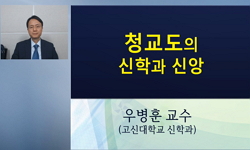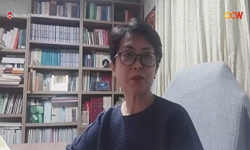이 논문의 목적은 평범한 그리스도인들이 일상에서 신약성경을 읽는 방법을 옹호하고 그것을 현대 상황에 적합한 학문적인 방법으로 확립하는 데에 있다. 또한 이 논문의 전제는 신약성경...
http://chineseinput.net/에서 pinyin(병음)방식으로 중국어를 변환할 수 있습니다.
변환된 중국어를 복사하여 사용하시면 됩니다.
- 中文 을 입력하시려면 zhongwen을 입력하시고 space를누르시면됩니다.
- 北京 을 입력하시려면 beijing을 입력하시고 space를 누르시면 됩니다.
신약성경 해석을 위한 담화행위 접근법의 가능성 모색 : 기독교윤리의 관점에서 고찰한 신약성경 윤리학 = (A) study on the possibility of narrative act approach to interpret the new testament : new testament ethics considered in Christian ethics
한글로보기https://www.riss.kr/link?id=T7934183
- 저자
-
발행사항
서울 : 연세대학교 대학원, 2001
- 학위논문사항
-
발행연도
2001
-
작성언어
한국어
- 주제어
-
KDC
233.5 판사항(4)
-
발행국(도시)
서울
-
형태사항
392p. ; 26 cm.
- 소장기관
-
0
상세조회 -
0
다운로드
부가정보
국문 초록 (Abstract)
첫 번째로 귀납적인 성경 읽기는 다음과 같은 네 가지 원칙을 따르는 것이다. ① 해석자가 맨 먼저 고려할 사항은 본문을 우리에게 범례가 될 이야기로 읽어 가는 것이다. ② 해석자는 본문에 속한 이야기와 자신과 자신의 공동체에 속한 이야기를 은유적인 상관 관계 속에 나란히 놓고 서로 결합시켜야 한다. ③ 해석자는 민초의 살아 있는 구어체인 이야기를 해석 작업에서 실제로 구사해야 한다. ④ 성경 읽기는 신앙 사건들을 짜임새 있게 반복해서 이야기함으로써 윤리적인 감동의 경지에 도달하는 전체 과정이어야 한다.
두 번째로 콘텍스트 중심적인 성경 읽는 다음과 같은 네 가지 원칙을 따르는 것이다. ① 해석자는 전이해나 당파성에 입각한 확고한 규범적인 입장에 서 있어야 한다. ② 해석자는 당파적인 관점에 의거해 본문의 역사를 재구성해야 한다. ③ 해석자는 신약성경 외의 다양한 텍스트들과 매체들과 이야기들 안에서 이루어지는 동시대적인 대화를 통해 본문을 읽어야 한다. ④ 해석자는 인종 계급 남녀 종교 그리고 문화 민족 언어 역사 각각 안에서의 모든 상이한 요소가 참가한 동시대적인 대화를 통해 본문을 읽어야 한다.
한편 대개 일반 그리스도인들이 행하는 성경 해석의 목표는 정당화된 도덕성을 얻는 것인데 매킨타이어의 주장에 따르면 정당화된 도덕성의 근거는 내재적인 가치들을 창출하는 공동체적인 실천에 두어야 한다. 신약성경 해석에 있어서 그러한 실천에 가장 가까운 것은 이야기 행위다. 따라서 성경 해석은 그 자체로서 옳음과 좋음에 관련된 규범적인 세계를 정당화하며 나아가 고상한 가치들을 창조하는 공동체적인 실천 행위이어야 한다. 그러기 위해서 그것은 최소한 실제로 이야기를 서술해 가는 발화 행위이자 언어 사건이어야 한다.
그러나 이야기 행위 자체만 놓고 따지면 그것은 막연하고 혼란스러울 수 있다. 왜냐하면 그것은 아포리아로 특정된 인간의 일상적인 삶과 가장 짧은 언어 행위이기 때문이다. 우리는 보다 더 긍정적이고 보다 덜 주관주의적인 결과를 일으킬만한 살아 움직이는 이야기 행위의 이론화된 조건을 생각해야 한다. 담화행위 접근법이라 명명된 이러한 조건은 귀납적인 성경 읽기의 핵심을 밝혀 준다. 담화행위 접근법은 다음과 같은 해석 원칙을 따르는 것이다. 즉 해석이란 독서 주체자인 나 자신이 본문들 속으로 몰입한 상태에서 탄탄한 줄거리로 무장된 그리고 박진감 넘치는 일화들을 보유한 이야기인 담화를 연거푸 상상적으로 서술하는 일종의 창작 행위이어야 한다. 그것은 또한 나 자신이 개방된 마음으로 통틀고 꿰뚫어 접근한 신약 성경과 함께 현재 맥락에 적합한 그리고 되도록 많은 사람에게 진실해 보일 감흥과 감동 있는 담화를 매번 새롭게 반복해 만들어 내는 행위이어야 한다.
담화행위 접근법은 여타 성서 비평 방법들과 비교할 때 독자-반응 비평과 가장 유사하다. 하지만 그것은 일상에서 누구에게나 해석의 참여를 허용하고 약자와 소수를 위한 당파적인 입장을 반영하기 때문에 신앙의 생활화 차원에 속한 민초 중심 윤리로 언제든 확장된다는 점에서 독자-반응 비평과 현격히 차별된다. 한마디로 그것은 해석의 민주화와 실천화를 강력히 추진한다. 그것은 개인의 전문화된 독서행위를 지양하고 각계 각층이 참여하는 공동체적인 나눔과 섬김의 실천을 지향한다. 더욱이 담화행위 접근법의 확대판인 이야기信學(혹은 담화-민초 접근법)은 비단 독자의 반응뿐 아니라 청중의 감동적인 반응까지 고려하고 나아가선 하나님 나라를 향한 사회 전체의 반응까지 고려할 만큼 고도의 실천성을 지닌다. 이 같은 측면에서 그것은 청중-반응 비평 내지 하나님-반응 비평이라 불릴 만하다.
이 논문의 목적은 평범한 그리스도인들이 일상에서 신약성경을 읽는 방법을 옹호하고 그것을 현대 상황에 적합한 학문적인 방법으로 확립하는 데에 있다. 또한 이 논문의 전제는 신약성경의 기능이 해석자가 그 책을 사용해 자신과 교회의 정체성 및 윤리적인 명제들을 새롭게 형성해 가는 수용자 본위의 기능이란 점이다. 이는 21세기 커뮤니케이션 기술의 혁명적인 발달로 말미암아 다시금 흔들릴지 모를 성경의 경전성을 유지하기 위한 방법적인 가설이기도 하다. 이렇게 가정할 때 귀납적인 방향성과 콘텍스트 강조성이라는 두 가지 개념이 도출된다. 전자는 텍스트와 해석자 개인의 현실 쪽에 상대적으로 접근해 있는 개념인 반면 후자는 사회 윤리적인 현실 쪽에 상대적으로 접근해 있는 개념이다.
첫 번째로 귀납적인 성경 읽기는 다음과 같은 네 가지 원칙을 따르는 것이다. ① 해석자가 맨 먼저 고려할 사항은 본문을 우리에게 범례가 될 이야기로 읽어 가는 것이다. ② 해석자는 본문에 속한 이야기와 자신과 자신의 공동체에 속한 이야기를 은유적인 상관 관계 속에 나란히 놓고 서로 결합시켜야 한다. ③ 해석자는 민초의 살아 있는 구어체인 이야기를 해석 작업에서 실제로 구사해야 한다. ④ 성경 읽기는 신앙 사건들을 짜임새 있게 반복해서 이야기함으로써 윤리적인 감동의 경지에 도달하는 전체 과정이어야 한다.
두 번째로 콘텍스트 중심적인 성경 읽는 다음과 같은 네 가지 원칙을 따르는 것이다. ① 해석자는 전이해나 당파성에 입각한 확고한 규범적인 입장에 서 있어야 한다. ② 해석자는 당파적인 관점에 의거해 본문의 역사를 재구성해야 한다. ③ 해석자는 신약성경 외의 다양한 텍스트들과 매체들과 이야기들 안에서 이루어지는 동시대적인 대화를 통해 본문을 읽어야 한다. ④ 해석자는 인종 계급 남녀 종교 그리고 문화 민족 언어 역사 각각 안에서의 모든 상이한 요소가 참가한 동시대적인 대화를 통해 본문을 읽어야 한다.
한편 대개 일반 그리스도인들이 행하는 성경 해석의 목표는 정당화된 도덕성을 얻는 것인데 매킨타이어의 주장에 따르면 정당화된 도덕성의 근거는 내재적인 가치들을 창출하는 공동체적인 실천에 두어야 한다. 신약성경 해석에 있어서 그러한 실천에 가장 가까운 것은 이야기 행위다. 따라서 성경 해석은 그 자체로서 옳음과 좋음에 관련된 규범적인 세계를 정당화하며 나아가 고상한 가치들을 창조하는 공동체적인 실천 행위이어야 한다. 그러기 위해서 그것은 최소한 실제로 이야기를 서술해 가는 발화 행위이자 언어 사건이어야 한다.
그러나 이야기 행위 자체만 놓고 따지면 그것은 막연하고 혼란스러울 수 있다. 왜냐하면 그것은 아포리아로 특정된 인간의 일상적인 삶과 가장 짧은 언어 행위이기 때문이다. 우리는 보다 더 긍정적이고 보다 덜 주관주의적인 결과를 일으킬만한 살아 움직이는 이야기 행위의 이론화된 조건을 생각해야 한다. 담화행위 접근법이라 명명된 이러한 조건은 귀납적인 성경 읽기의 핵심을 밝혀 준다. 담화행위 접근법은 다음과 같은 해석 원칙을 따르는 것이다. 즉 해석이란 독서 주체자인 나 자신이 본문들 속으로 몰입한 상태에서 탄탄한 줄거리로 무장된 그리고 박진감 넘치는 일화들을 보유한 이야기인 담화를 연거푸 상상적으로 서술하는 일종의 창작 행위이어야 한다. 그것은 또한 나 자신이 개방된 마음으로 통틀고 꿰뚫어 접근한 신약 성경과 함께 현재 맥락에 적합한 그리고 되도록 많은 사람에게 진실해 보일 감흥과 감동 있는 담화를 매번 새롭게 반복해 만들어 내는 행위이어야 한다.
담화행위 접근법은 여타 성서 비평 방법들과 비교할 때 독자-반응 비평과 가장 유사하다. 하지만 그것은 일상에서 누구에게나 해석의 참여를 허용하고 약자와 소수를 위한 당파적인 입장을 반영하기 때문에 신앙의 생활화 차원에 속한 민초 중심 윤리로 언제든 확장된다는 점에서 독자-반응 비평과 현격히 차별된다. 한마디로 그것은 해석의 민주화와 실천화를 강력히 추진한다. 그것은 개인의 전문화된 독서행위를 지양하고 각계 각층이 참여하는 공동체적인 나눔과 섬김의 실천을 지향한다. 더욱이 담화행위 접근법의 확대판인 이야기信學(혹은 담화-민초 접근법)은 비단 독자의 반응뿐 아니라 청중의 감동적인 반응까지 고려하고 나아가선 하나님 나라를 향한 사회 전체의 반응까지 고려할 만큼 고도의 실천성을 지닌다. 이 같은 측면에서 그것은 청중-반응 비평 내지 하나님-반응 비평이라 불릴 만하다.
다국어 초록 (Multilingual Abstract)
Firstly, the inductive reading of the New Testament means that following four rules are to be observed. ① The preliminary condition that the interpreter should bear in mind is whether or not he is reading the text as a possible paradigm for himself. ② The interpreter should place the story of the text and the stay of his own or his community side by side, next then analogically unite both of them in a metaphoric interrelation ③ In hermeneutic practice, the interpreter should make real use of a storytelling act, which is most ordinary people's living oral medium for communication. ④ Reading the New Testament should be the whole process to arrive on the state of being ethically touched by telling and retelling what is called faith events interestingly and systematically.
Secondly, the contextual reading of the New Testament means that following four rules are to be observed. ① The interpreter should hold resolutely his own normative point of view grounded on preunderstanding or a justifiable advocating notion. ② In conformity with his justifiable advocating standpoint, the interpreter should find out and reconstruct the minor's or the weak's histories concealed in all of the related texts. ③ The interpreter should read the related texts through a contemporary dialogue, which has to be going on among diverse past texts or hermeneutical intermedia or present narratives, besides the sacred Book. ④ The interpreter should read the related texts through a contemporary dialogue, which has to be taken part in by every different or even every conflicting component of each realm such as race, class, sex, religion, culture, nation, language, history, and so forth.
On the other hand, the object of interpreting the Scripture practiced everyday by common Christians is usually to reach a morally justified state. According to Alasdair MacIntyre, who is currently representative of communalistic ethicists, a foundation for the morally justified state needs to be a certain communal praxis creating imminent high values. In Christians' interpreting the New Testament, it is a storytelling act that is the nearest one to the praxis like that. Interpreting the Book proves to be, therefore, the communal praxis which justifies a normative semantic world concerning rightness or goodness, and furthermore the one which creates high moral values by itself. To do so, the interpretation is supposed to be at the least a language event and a speech act as well, that is to say, telling the stories quite really, not pretending that.
But, the storytelling act itself only being considered, it might be felt ambiguous and confusing. Because it is the undefinable linguistic act which is most similar to the everyday human life characterized as op oria. So we must think out a little more theorized conditions of the lively moving storytelling act that can generate more desirable and less subjective results. Such condition, named 'narrative-act approach,' indeed make clear the core of how to read over the New Testament inductively. This approach means that following interpreting conditions are to be observed. As it were, the interpreting should be a kind of creating a work, in the successive procedure of which the reading agent, 'I' myself, while absorbed in the text, keep on weaving the narrative, i.e. the story with thick plot and lifelike episodes, imaginatively. It should be also the act that 'I' myself, open-mindedly reading through all the related texts, repeatedly compose up the narrative anew each time; the narrative equipped with interest and impression, or regarded as fit for the present context and truthful by as many people as possible.
If the narrative-act approach is compared with the other Biblical criticisms, it will resemble reader-response criticism most. But it is discriminated widely form the reader-response criticism, in that, because it permits everyone to participate in the interpretation, a part of everyday life; it reflects the advocating standpoint for the weak and the minor, it can anytime expand into a people-centered ethics belonging to the dimension of the living of faith. To be short, it pushes for the democratization of interpretation and the actualization of interpretation. It passes through the expert reading done by a private individual, so that it always aims at the praxis of communal sharing or serving done by the various members from all sorts of fields and levels. What is more, the stay faithology, which is almost equivalent to the extended version of the narrative-act approach, or expressed in other words 'narrative-people approach,' has enough high-degree practicality to consider not only the response of a reader but also the impressive response of a audience, and finally consider the response of a total society, looking forward to the coming Kingdom of God. In this respect, the narrative-people approach may well be called 'audience-response criticism' or 'God-response criticism.'
The main purpose of this thesis is to support the way in which general common Christians read the New Testament everyday, and to establish it as a scholarship suitable for today's ethical situation. Then the premise for this project is that the New Te...
The main purpose of this thesis is to support the way in which general common Christians read the New Testament everyday, and to establish it as a scholarship suitable for today's ethical situation. Then the premise for this project is that the New Testament propely functions when the interpreter, who is in a position to accept meaning, opposite from original author or text or textual context, actively responds with the text as a sacred work, continuing to form repeatedly not only the identity of his own or his community but also ethical propositions, in reading process. Such is, at the same time, a methodological assumption to maintain the canonicity of the Book, the authority of which seems likely to become unstable again owning to the revolutionary progress of communication technology toward the beginning of the 21st century. From the above assumption we can logically get two hermeneutic conceptions, namely, inductive directionality and contextual conspicuousness. The former implies a dimension relatively close to the reality of text and individual interpreter, while the latter implies a dimension relatively close to the reality of social ethics.
Firstly, the inductive reading of the New Testament means that following four rules are to be observed. ① The preliminary condition that the interpreter should bear in mind is whether or not he is reading the text as a possible paradigm for himself. ② The interpreter should place the story of the text and the stay of his own or his community side by side, next then analogically unite both of them in a metaphoric interrelation ③ In hermeneutic practice, the interpreter should make real use of a storytelling act, which is most ordinary people's living oral medium for communication. ④ Reading the New Testament should be the whole process to arrive on the state of being ethically touched by telling and retelling what is called faith events interestingly and systematically.
Secondly, the contextual reading of the New Testament means that following four rules are to be observed. ① The interpreter should hold resolutely his own normative point of view grounded on preunderstanding or a justifiable advocating notion. ② In conformity with his justifiable advocating standpoint, the interpreter should find out and reconstruct the minor's or the weak's histories concealed in all of the related texts. ③ The interpreter should read the related texts through a contemporary dialogue, which has to be going on among diverse past texts or hermeneutical intermedia or present narratives, besides the sacred Book. ④ The interpreter should read the related texts through a contemporary dialogue, which has to be taken part in by every different or even every conflicting component of each realm such as race, class, sex, religion, culture, nation, language, history, and so forth.
On the other hand, the object of interpreting the Scripture practiced everyday by common Christians is usually to reach a morally justified state. According to Alasdair MacIntyre, who is currently representative of communalistic ethicists, a foundation for the morally justified state needs to be a certain communal praxis creating imminent high values. In Christians' interpreting the New Testament, it is a storytelling act that is the nearest one to the praxis like that. Interpreting the Book proves to be, therefore, the communal praxis which justifies a normative semantic world concerning rightness or goodness, and furthermore the one which creates high moral values by itself. To do so, the interpretation is supposed to be at the least a language event and a speech act as well, that is to say, telling the stories quite really, not pretending that.
But, the storytelling act itself only being considered, it might be felt ambiguous and confusing. Because it is the undefinable linguistic act which is most similar to the everyday human life characterized as op oria. So we must think out a little more theorized conditions of the lively moving storytelling act that can generate more desirable and less subjective results. Such condition, named 'narrative-act approach,' indeed make clear the core of how to read over the New Testament inductively. This approach means that following interpreting conditions are to be observed. As it were, the interpreting should be a kind of creating a work, in the successive procedure of which the reading agent, 'I' myself, while absorbed in the text, keep on weaving the narrative, i.e. the story with thick plot and lifelike episodes, imaginatively. It should be also the act that 'I' myself, open-mindedly reading through all the related texts, repeatedly compose up the narrative anew each time; the narrative equipped with interest and impression, or regarded as fit for the present context and truthful by as many people as possible.
If the narrative-act approach is compared with the other Biblical criticisms, it will resemble reader-response criticism most. But it is discriminated widely form the reader-response criticism, in that, because it permits everyone to participate in the interpretation, a part of everyday life; it reflects the advocating standpoint for the weak and the minor, it can anytime expand into a people-centered ethics belonging to the dimension of the living of faith. To be short, it pushes for the democratization of interpretation and the actualization of interpretation. It passes through the expert reading done by a private individual, so that it always aims at the praxis of communal sharing or serving done by the various members from all sorts of fields and levels. What is more, the stay faithology, which is almost equivalent to the extended version of the narrative-act approach, or expressed in other words 'narrative-people approach,' has enough high-degree practicality to consider not only the response of a reader but also the impressive response of a audience, and finally consider the response of a total society, looking forward to the coming Kingdom of God. In this respect, the narrative-people approach may well be called 'audience-response criticism' or 'God-response criticism.'
목차 (Table of Contents)
- 목차
- 국문요약
- I. 서론 = 1
- 1. 문제 제기 = 4
- 2. 연구 가설 = 10
- 목차
- 국문요약
- I. 서론 = 1
- 1. 문제 제기 = 4
- 2. 연구 가설 = 10
- 3. 과제 정립 = 37
- 4. 연구 방법 = 50
- 5. 용어 설명 = 53
- II. 기본 해석 방법 : 신약성서에 대한 여러 가지 해석학적 방법들 = 57
- 1. 헤이즈의 해석학적 방법론 : 은유 만들기 = 61
- 2. 쉬슬러 피오렌자의 해석학적 방법론 : 당파성의 신학 = 73
- 3. 곽푸일란의 해석학적 방법론 : 동시대적 대화 = 84
- 4. 김중기의 해석학적 방법론 : 이야기 신학 = 97
- 5. 비교 평가 = 129
- III. 주요 해석 방법 정당화된 도덕성의 근거에 관한 철학적인 논의 = 147
- 1. 담화행위 접근법에 대한 사전 개괄 = 148
- 2. 자연주의 오류 문제에 대한 자연주의 철학적인 해법 = 157
- 3. 자연주의 오류 문제에 대한 공동체주의적인 방안 : 매킨타이어의 이론을 중심으로 = 171
- 4. 비교 평가 : 형식과 절차와 법칙과 실천 그리고 실천으로서의 이야기 행위와 담화행위 = 187
- IV. 신약성경 해석을 위한 담화행위 접근법의 가능성 모색 = 201
- 1. 담화행위의 중요성과 생동력 = 202
- 2. 담화행위의 특별성 = 221
- 3. 살아 움직이는 담화행위의 조건 : 개방성과 진실성과 적합성 = 235
- 4. 살아 움직이는 담화행위의 조건 : 줄거리와 일화들과 반복성 = 251
- V. 일반 성서 비평론과 담화행위 접근법 : 유사점과 차이점 = 277
- 1. 일반 성서 비평론 속에서 담화행위 접근법이 차지하는 위치 = 278
- 2. 독자-반응 비평과 담화행위 접근법 : 유사점과 차이점 = 287
- VI. 담화행위 접근법의 활용 : 독자-반응 비평을 넘어서 = 307
- 1. 담화행위 접근법의 관점에서 분식한 김중기의 성경 공부 이론 = 309
- 2. 적용 사례 : “예수의 변화 체험과 자아 정립” = 322
- 3. 적용 실험 : “바울과 고린도 교회 공동체의 신앙 사건” = 338
- VII. 결론 = 361
- 1. 요약 = 362
- 2. 평가 = 367
- 참고문헌 = 373
- ABSTRACT = 389












